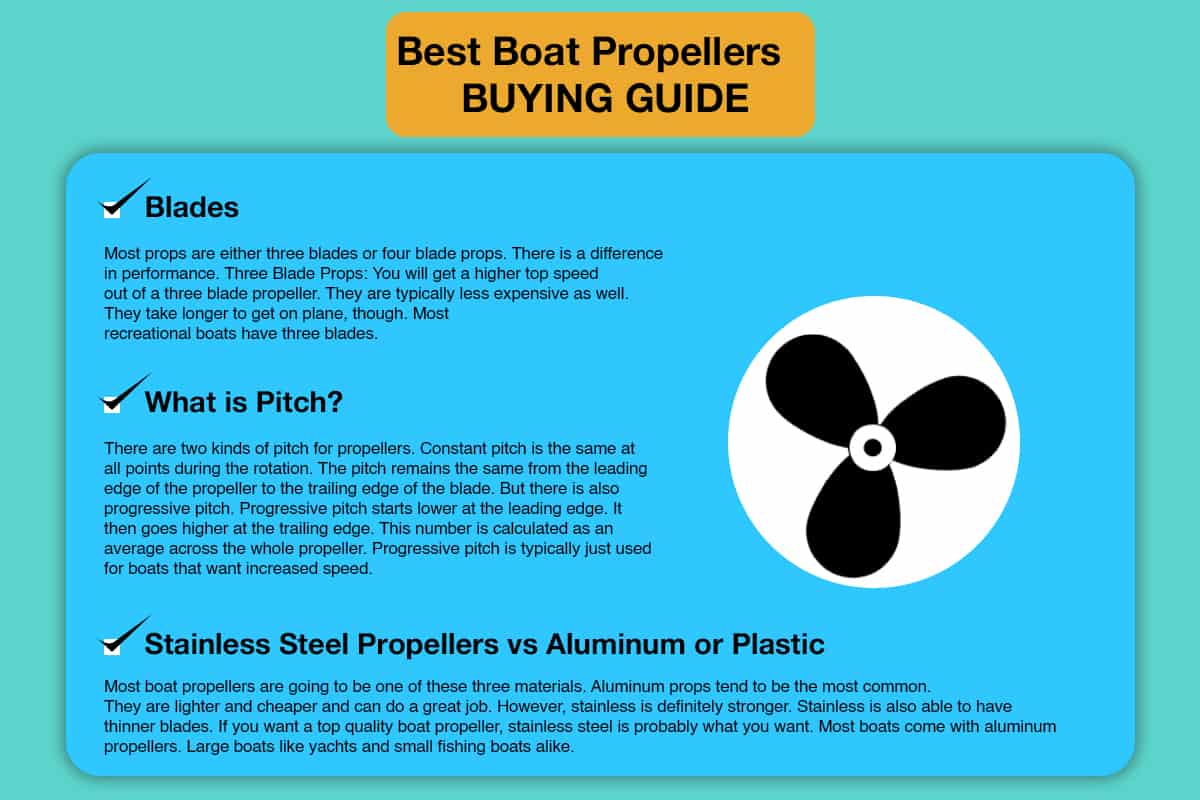The 7 Best Boat Propellers for 2024
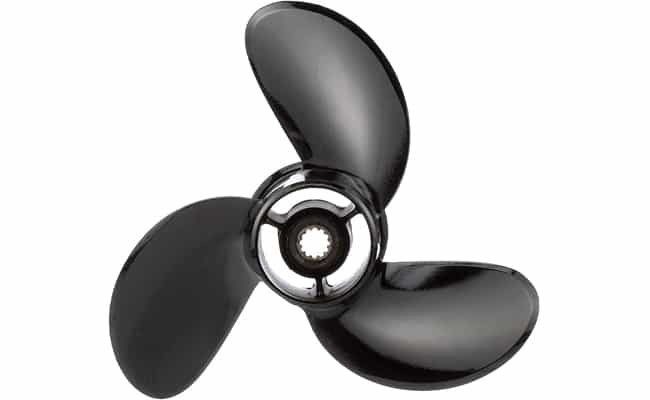
Quicksilver Black Diamond
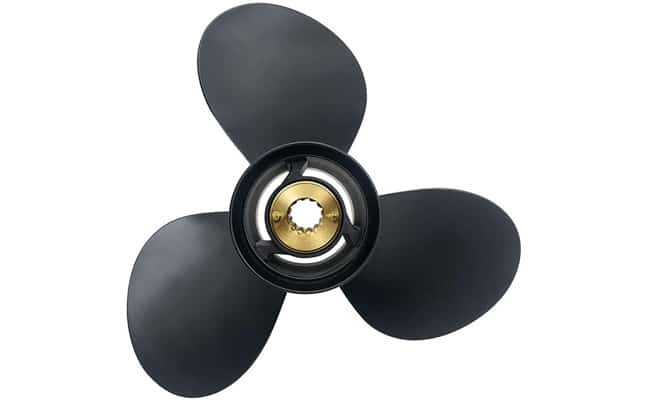
Rhink Marine Three Blade Aluminum Prop
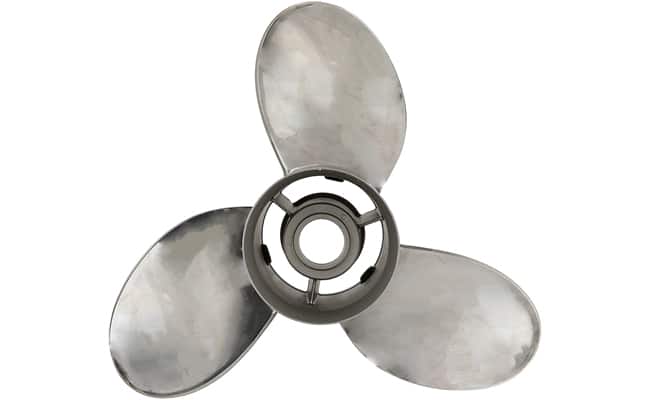
Quicksilver Thunderbolt
Buying a boat propeller seems like it should be an easy task. But there are actually so many factors you need to take into consideration. It can leave you scratching your head. Let’s cut through the confusion and take a look at the best boat propellers on the market today.
Quicksilver Black Diamond
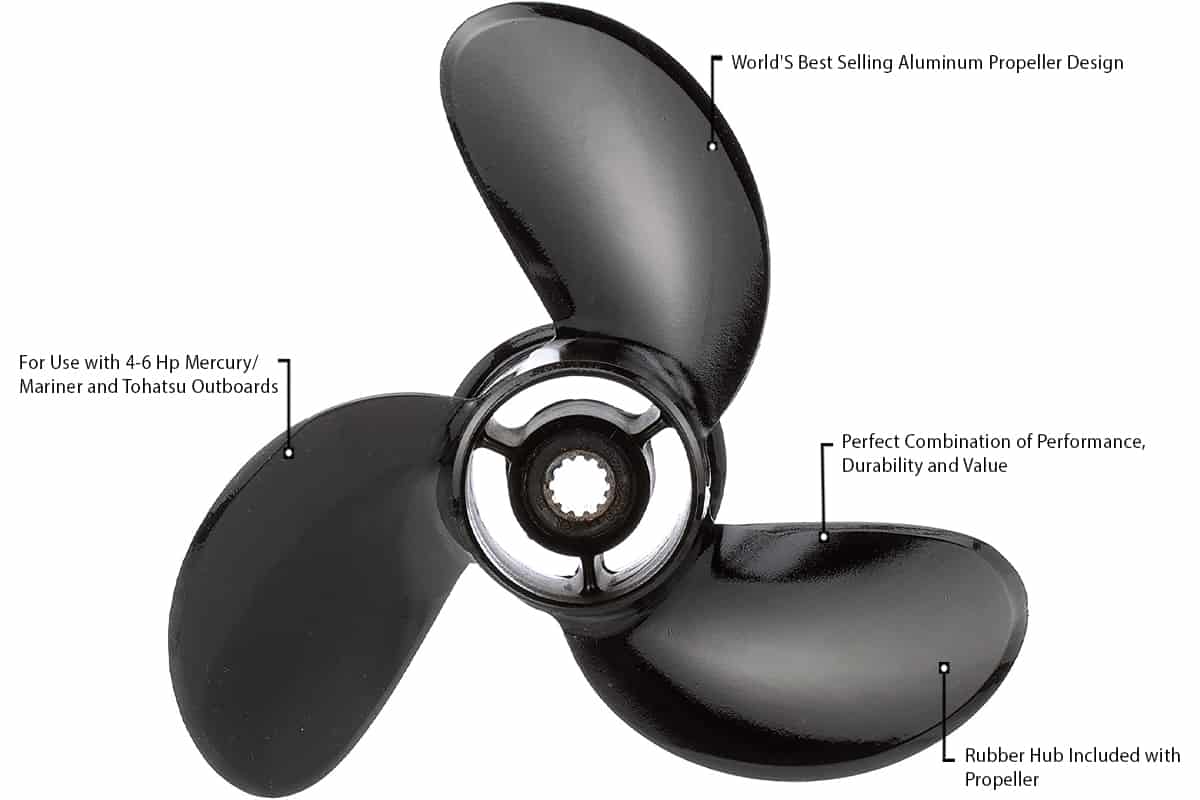
The Quicksilver Black Diamond is the best all around boat prop you’re going to find. It’s not too expensive, but it’s built to last and to perform. In fact, it’s the best-selling aluminum prop in the world.
This is Quicksilver’s 3 blade design. It’s right hand and comes in a large range of pitch sizes. You can use this anywhere from 25 horsepower up to 250 horsepower outboard motors. It’s also suitable for Alpha One sterndrives. It operates with the Flo-Torq hub system you’ll find on many outboards.
The included hub will work for engines up to 60 horsepower. If you have a bigger engine, you can pick up a different hub system to get the job done.
Installation of the Black Diamond is pretty easy. Even if you haven’t done it before, it shouldn’t take you long. Follow the instructions and you should be fine. You have to make sure you get the exact right size, though. This model comes in well over a dozen different sizes. If the hub size is off, the prop simply won’t install and you’ll have wasted a lot of time.
Once installed, expect to see a big improvement in planing. This model also offers a solid hole shot. That refers to your boat’s ability to accelerate. That means from a standstill or just low speed. If you hate slow acceleration, a good hole shot is important.
As a lightweight aluminum three blade prop, you get good fuel efficiency as well. Overall, speed and performance is top-notch.
Rhink Marine Three Blade Aluminum Prop
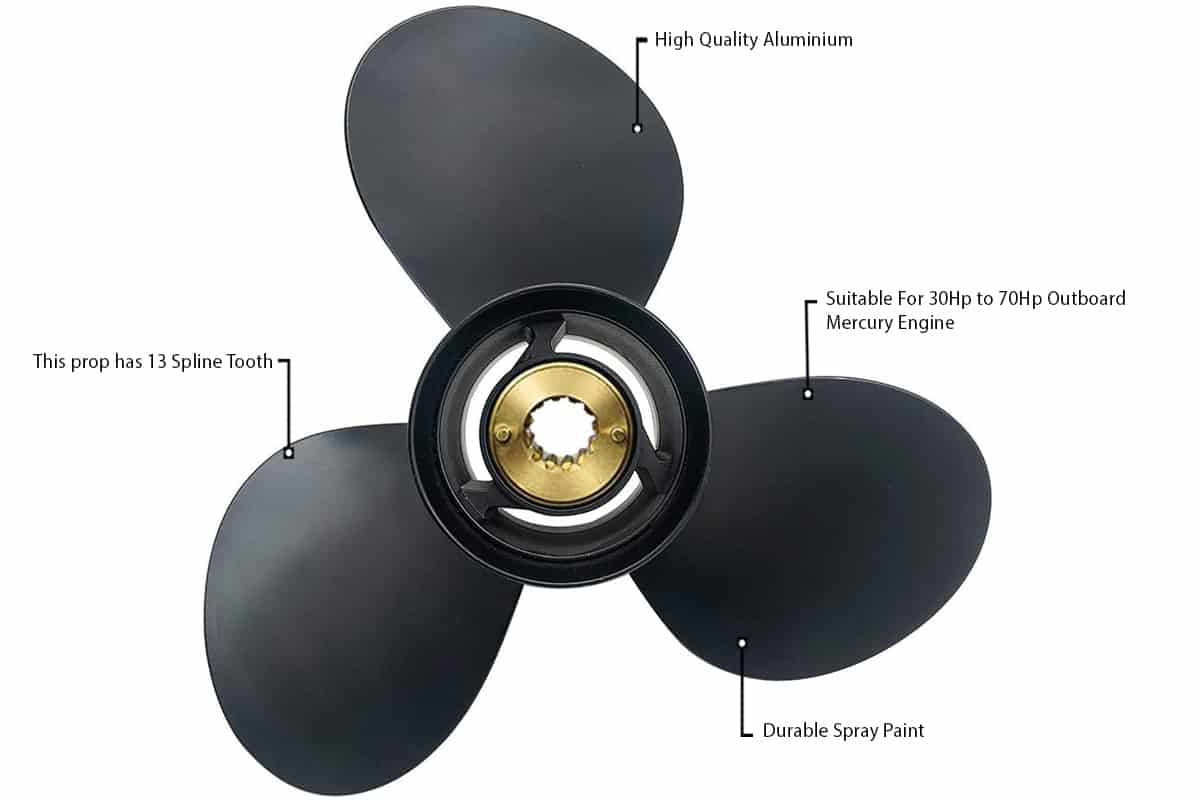
If you’re not looking to sink a ton of money into a prop, try Rhink Marine. These affordable props are suitable for outboard motors. Those that run between 30 horsepower and 70 horsepower. The company guarantees performance. They promise that the diameter and pitch are identical to OEM parts. As always, you want to make sure you check the size of your engine before ordering.
Despite the price, these are well machined props. They stand up as well as similar aluminum props on the market. Expect solid performance, speed and acceleration. The best part? You can literally buy a back up prop and still save money over similar models.
Quicksilver Thunderbolt
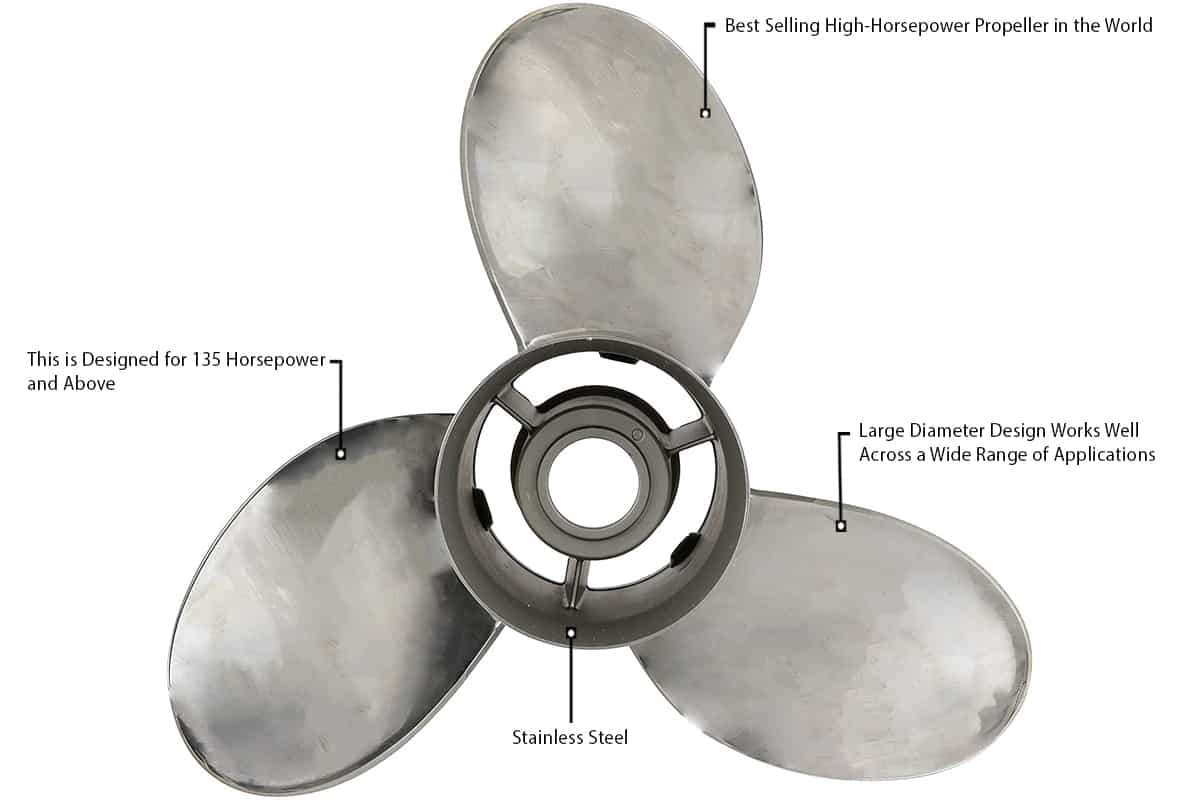
The Quicksilver thunderbolt is not a prop for the faint of heart. This is not meant for puttering upriver in your jon boat looking for trout. If you want serious speed, this is the prop for you. You don’t want this prop if your boat doesn’t have serious horses in the engine. This is designed for 135 horsepower and above. Can you use it on a less powerful boat? Yeah, but it won’t be worth it. Given the price, you only want to use this prop if you’re getting the most out of it.
If you’re into serious cruising or racing, this can really give performance a boost. It’s stainless steel, so it can stand up to some use. It’s also a solid choice for a V-6 outboard offshore fishing vessel. A V-bottom sports boat with stern drive will also work here.
You have both left and right-hand configuration available. The blades have a large diameter and produce serious push. One thing to keep in mind is you need to buy a hub kit separately. That can be a pain.
If you want top shelf performance and durability, this is a great choice.
Quicksilver Nemesis Four Blade Propeller
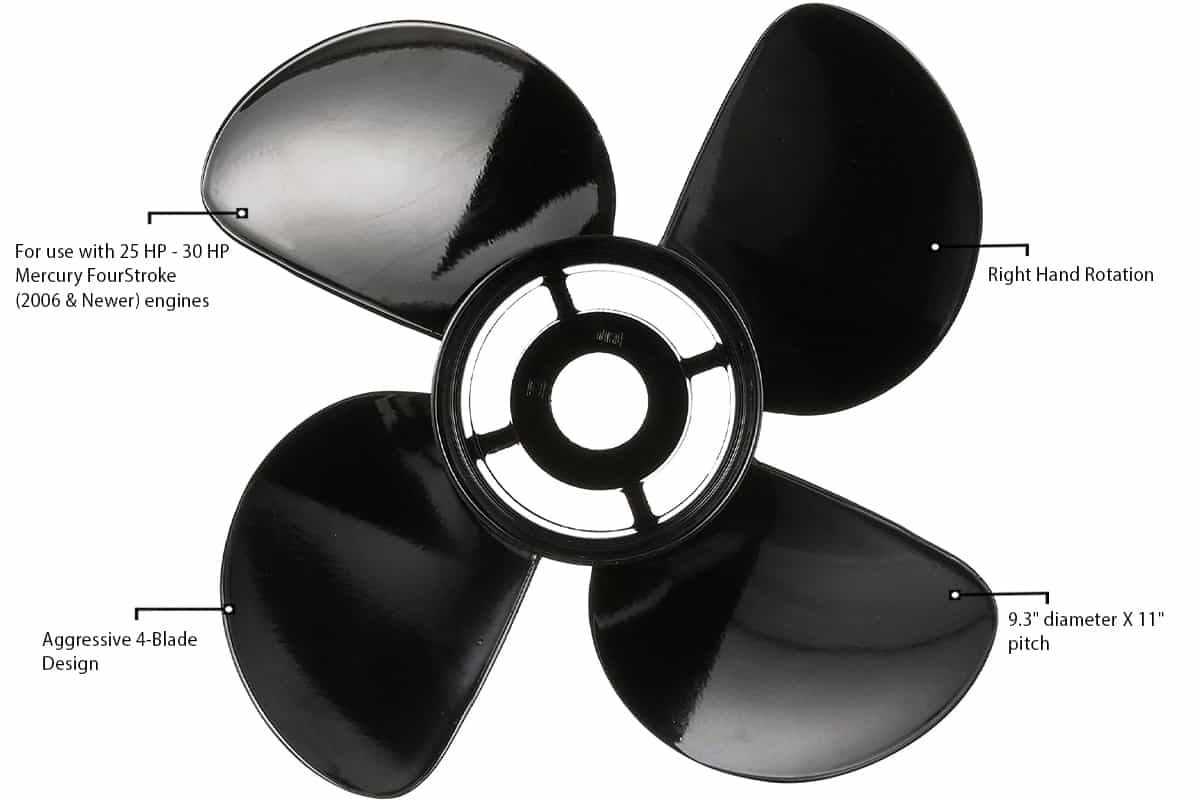
Between the Black Diamond and the Nemesis, we had a tough time picking the best overall. Quicksilver makes some of the best props out there and this is no different. This is Quicksilver’s four blade prop, and it gets the job done well.
This prop comes in the same wide range of pitches and diameters as the Black Diamond. Expect a massive boost in acceleration here. Up to 25% improvement. At the same time, your top speed will not suffer. Check your RPM if you’re swapping from three blade to four blade. You need to make sure it’s compatible.
You’ll get high rake angles with this prop. It also offers added cupping. Cupped props can lower RPM while improving performance. Just make sure you watch out for fit. You may need separate hubs to attach this one.
Turning Point Express Three Blade Propeller
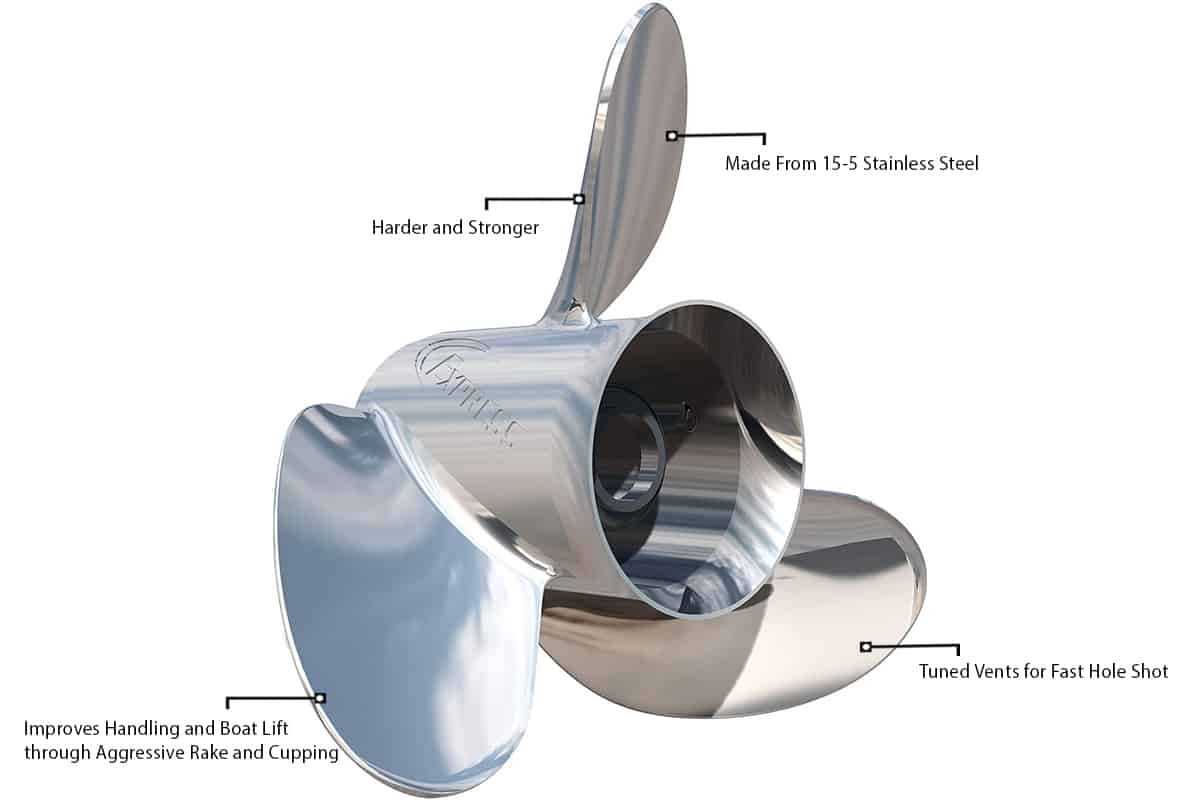
Another high performance three blade prop is Turning Point Express. Higher horsepower boats, pontoons and center consoles can benefit from this prop. hubs come with a lifetime warranty from the company. There are also vents to help with your hole shot. If get up and go is important to you, this is a great boat propeller.
Because it’s a stainless prop, expect to pay a bit more for it. The trade off is that it’s going to last longer and perform better overall. It produces higher rake angles to give you added lift. Both the pitch and cup angles are designed for optimal performance. That means better speed and acceleration, but also better fuel economy.
There are rumors that the Turning Point may corrode on you though, so keep your eyes open. Their steel is a proprietary mix that’s meant to include 20% more chromium than others. That should be keeping it nice and shiny and rust resistant, however. Still, something to keep in mind.
Young Marine OEM Aluminum Prop
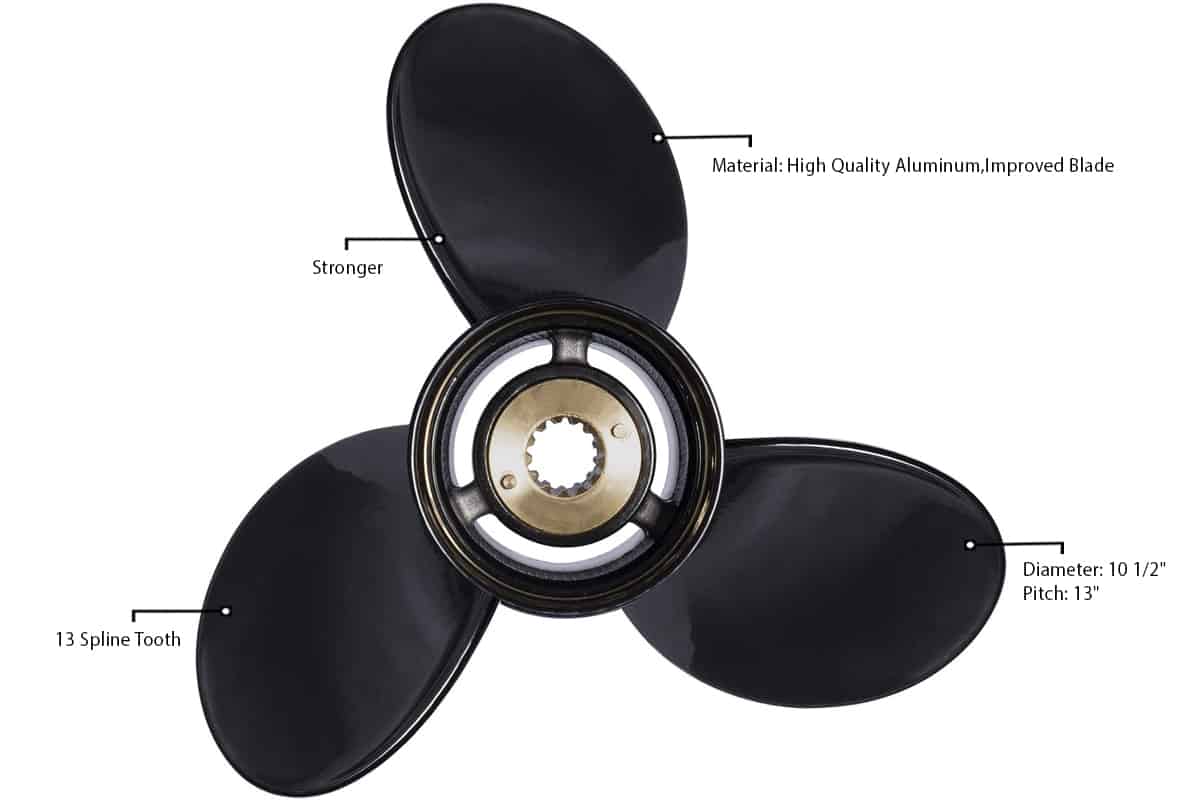
Another budget conscious option is the Young Marine prop. It’s designed to be identical to OEM and match diameter and pitch exactly. Combined with a much lower price tag and you have a really great option here.
As always, make sure you know your sizing exactly. This is designed for between 30 hp and 70 hp outboards. It does the job you need it to and should last as long as similar models.
Mercury Marine Spitfire
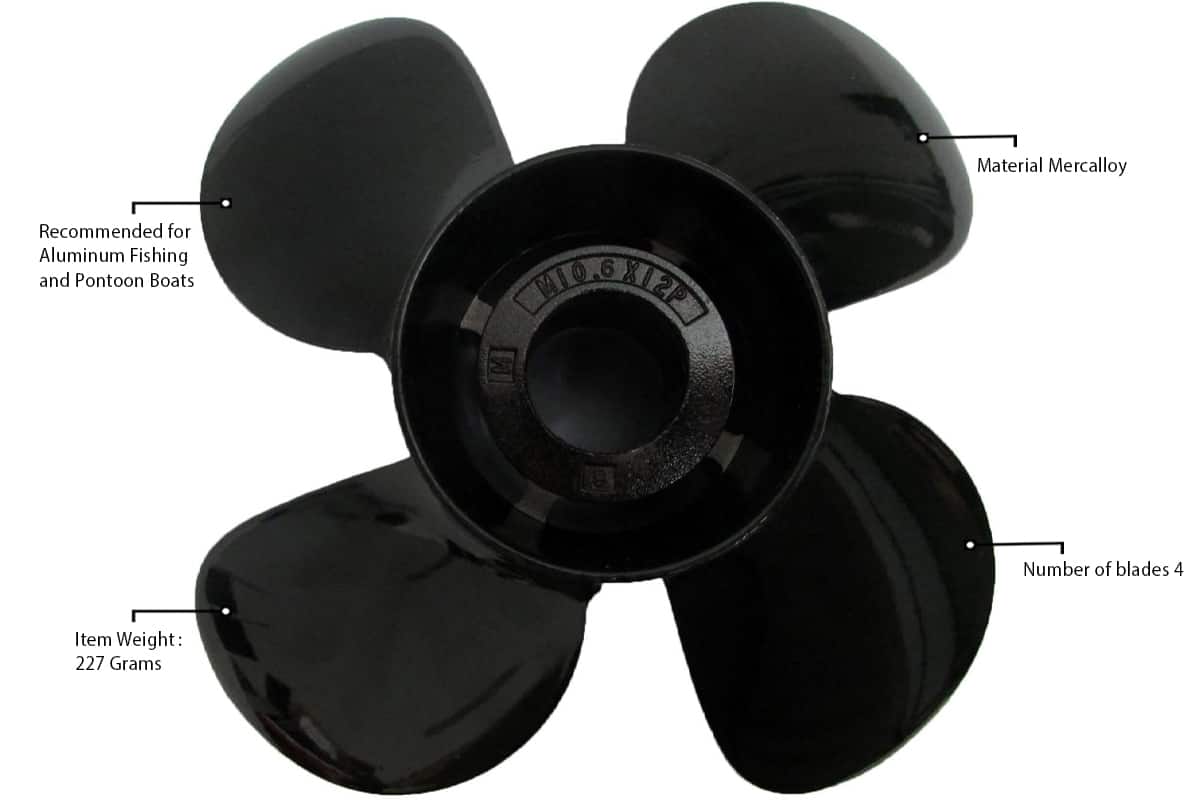
Mercury Marine is known for top quality products. The Spitfire comes in pretty much every size and configuration you can imagine. The four blade prop promises between 16% and 25% faster acceleration. The aggressive rake offers great speed and boat performance. The aggressive cupping means you’re not sacrificing RPMs. At the same time, you have more control.
Mercury Marine offers solid design all the time. No worries about blowouts with this. The Flo-Torq Reflex hub system protects the driveshaft and engine. Even rough impacts shouldn’t lead to engine damage.
Choosing the Best Boat Propellers
You need to make sure you have the right propeller on your boat or things will work poorly. Boat propellers have the diameter and pitch inscribed in the hub. It may also be along the side of the propeller. Check your old prop for these numbers before buying a new one. If the numbers aren’t present for some reason, you can figure it out the old-fashioned way.
Diameter can be measured by hand. Measure from the center of your hub to the edge of the blade. That’s your radius. Double it and you have prop diameter.
We’ll get into propeller pitch later in detail. For now, if you’re not sure, know that pitch is measured in inches. An 18 inch pitch propeller would move 18 inches in the water with one revolution. More pitch equals more speed but slower acceleration. What you need depends on your particular boat and engine. Check with your engine’s manual or a specialist to find out the best pitch if you don’t know.
Blades
Most props are either three blades or four blade props. There is a difference in performance.
Three Blade Props: You will get a higher top speed out of a three blade propeller. They are typically less expensive as well. They take longer to get on plane, though. Most recreational boats have three blades.
Four Blade Props: These are better for tougher conditions as opposed to top end speed. Four blades work well in rough water. They will also be more fuel efficient. You will lose some RPM, though. You plane quicker with a 4 blade propeller. They tend to be more expensive overall.
What is Pitch?
The word pitch has been used frequently here to describe props. Pitch refers to the distance the propeller travels during one revolution. This is affected by the radius of the propeller.
There are two kinds of pitch for propellers. Constant pitch is the same at all points during the rotation. The pitch remains the same from the leading edge of the propeller to the trailing edge of the blade. But there is also progressive pitch. Progressive pitch starts lower at the leading edge. It then goes higher at the trailing edge. This number is calculated as an average across the whole propeller. Progressive pitch is typically just used for boats that want increased speed.
As far as most boaters need to know, pitch is like a gear ratio. You want your pitch to work with your wide open throttle or WOT. Your engine’s manual will tell you what your WOT is.
If you have a lower pitch than you need, your engine may go over the WOT RPMs. That’s not a good thing. It means you’re going to be straining your engine. This can cause engine damage or the engine may set up a rev limiter.
If you have more pitch than you need, the opposite happens. You’re going to lose RPMs. That’s going to make your engine struggle. So there are times when a low pitch propeller is what you want depending on boat speed. The right prop depends on what you do with your boat.
Pitch is measured in inches. It’s not set in stone, but if you move up or down two inches, your WOT will change by around 400 RPM. Keep that in mind when choosing the pitch for your prop.
You likely want a lower pitch if you’re moving heavy loads frequently. If you’re just cruising around, low pitch three blade props are great. If you want to up the ante a bit and go water skiing, then you can stick with low pitch and try four blades.
Stainless Steel Propellers vs Aluminum or Plastic
Most boat propellers are going to be one of these three materials. Aluminum props tend to be the most common. They are lighter and cheaper and can do a great job. However, stainless is definitely stronger. Stainless is also able to have thinner blades. If you want a top quality boat propeller, stainless steel is probably what you want. Most boats come with aluminum propellers. Large boats like yachts and small fishing boats alike.
Plastic props are more common on small boats. They require less power and the prop will do less work. The propeller blade on a plastic prop is going to be flimsy, as you might expect. Heavier boats can’t use these. They’ll have more drag than the prop can handle.
For optimum performance, stainless steel props are best. The boat’s performance will reflect this. However, you may see increased fuel efficiency with a lighter aluminum prop. Much of it depends on the type of boat and engine you have.
Basically, a stainless steel prop is going to last longer than the others. Up to five times longer, in fact. It can stand up to more abuse. You’ll be less likely to need to replace it as soon as another type.
Is a Stainless Steel Prop Always the Best Choice?
Many people think a stainless steel propeller is always the best choice. But for a lighter and smaller boat, that may not always be the case. As you saw, many aluminum props are extremely high quality. Aluminum props can deliver better hole shot and increase speed. They give great fuel economy and have a wide pitch range. Whether you want a lower pitch or something higher, an aluminum prop could work fine.
The other big consideration is price. Aluminum props are cheaper. That price difference can be very significant.
The Bottom Line
The biggest concern you need to keep in mind is sizing. So many boat owners have messed up and bought the wrong size prop. Don’t feel too bad if it happens to you. The numbers can look confusing. Just make sure you check and double check before you buy.
Installation should be easy for any prop. When in doubt, check online or ask a pro. Stay safe and have fun.
Categories: Boats
